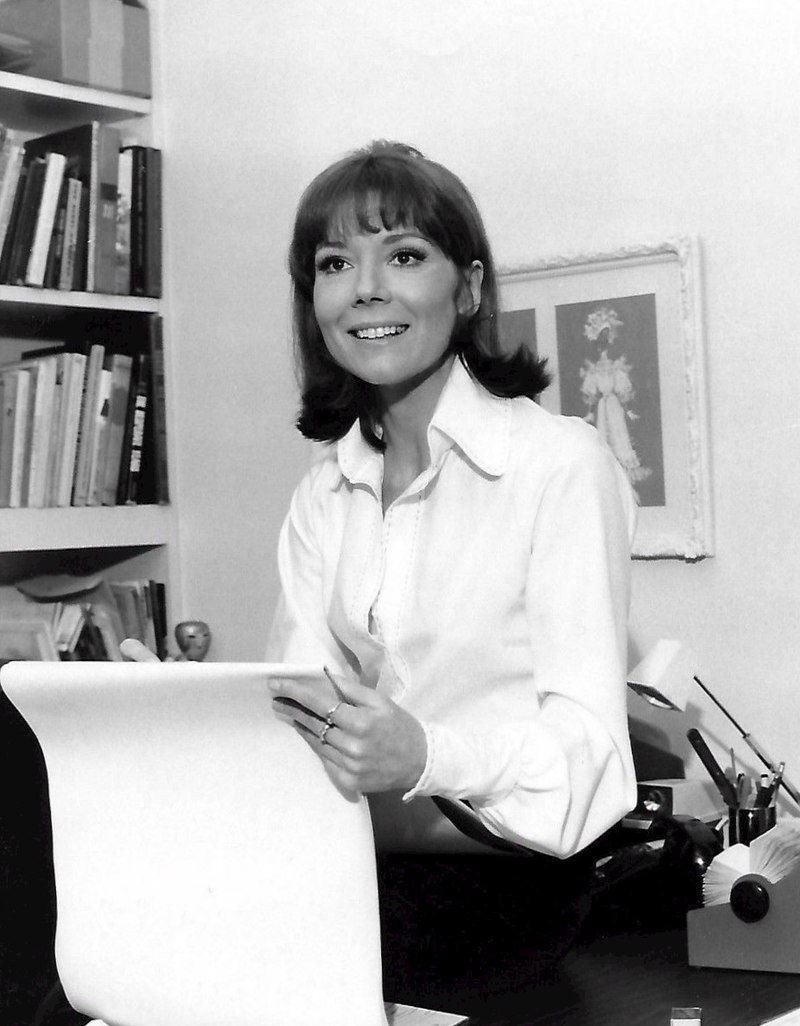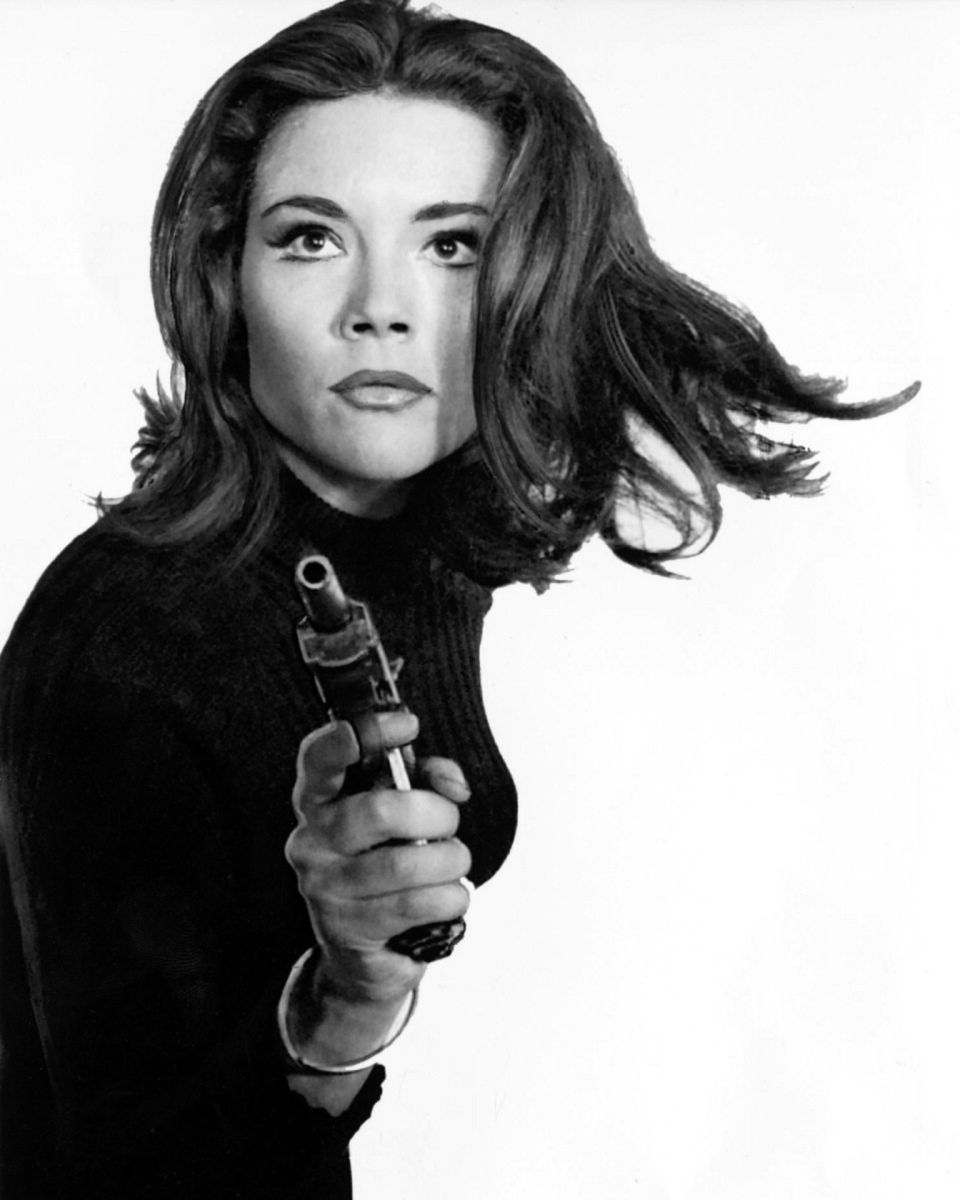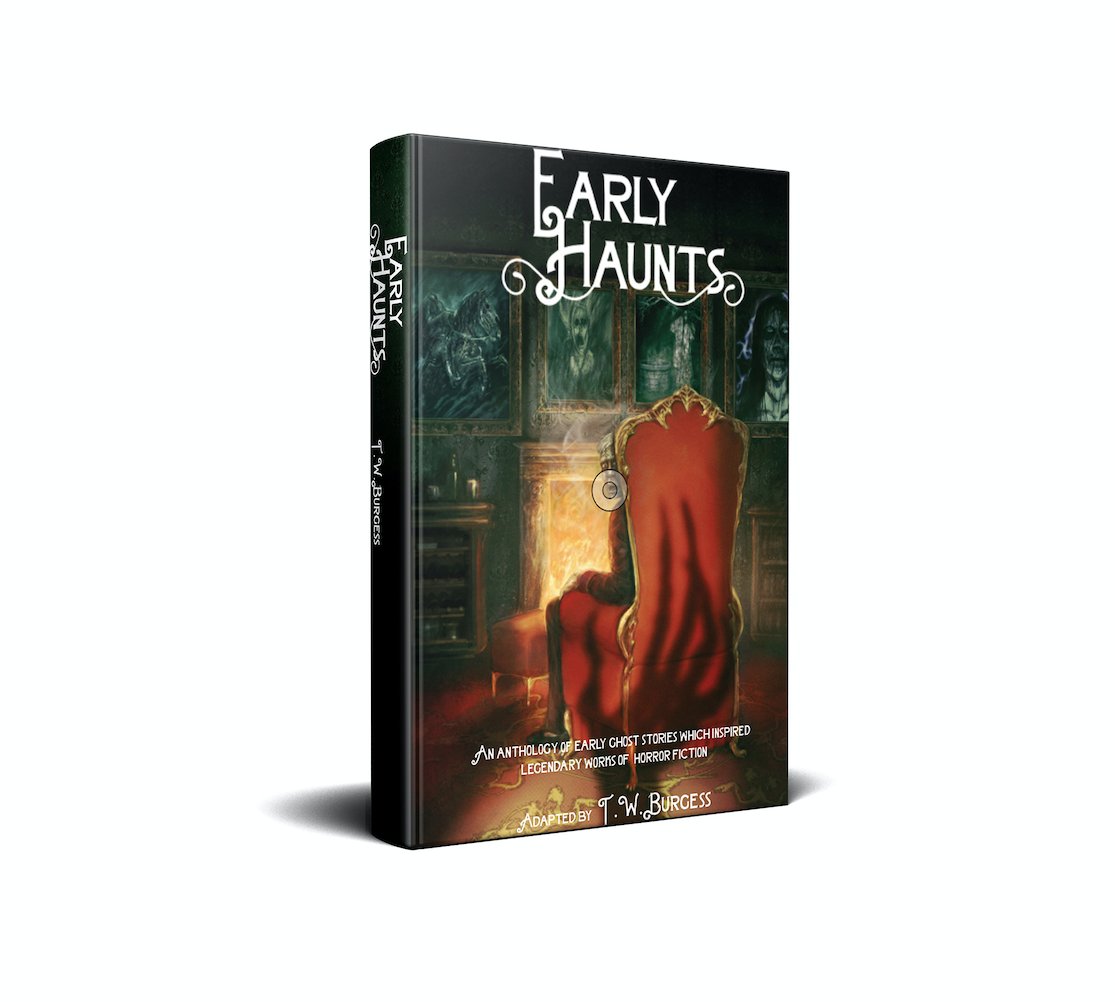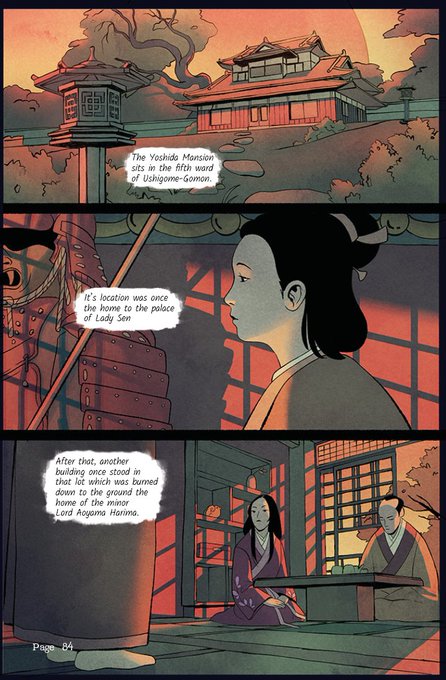Wednesday, 30 September 2020
Monday, 28 September 2020
Psychic Shoplifting in Bognor Regis
A famous pre-war poltergeist case features in the Guardian, as a trailer for a new book by Kate Summerscale. It concerns the famous Nandor Fodor, who reached some interesting conclusions about what poltergeists might be. He investigated the case of Alma Fielding, a Croydon woman who was plagued by mysterious phenomena. Summerscale discovered some interesting documentation from the time in the archives of the Society for Psychical Research...
The manila folder contained transcripts of Fodor’s interviews and seances with Alma, lab reports, X-rays, copies of her contracts, scribbled notes, sketches, photographs of the damage wrought by the poltergeist in Alma’s house and on her body. From Alma’s story Fodor had deduced, to the horror of his colleagues, that repressed memories could generate terrifying physical events.
We also learn that Fodor's work was influential on Shirley Jackson, and that applauded her approach. Eleanor Lance, in The Haunting of Hill House, manifests inner turmoil with strange physical phenomena. And yes, the title is correct - according to Fodor, when he took Alma on a jaunt to Bognor Regis and they visited a jeweler, a ring mysteriously ended up on her person - an 'apport', if you like.
The Haunting of Alma Fielding by Kate Summerscale, will be published by Bloomsbury Circus on 1st October. It has been longlisted for the Baillie Gifford prize for nonfiction 2020.Sunday, 27 September 2020
Thursday, 24 September 2020
Wednesday, 23 September 2020
Vein Diagram (See What I Did There?)
Tuesday, 22 September 2020
Sneaky Peek
A little glimpse of the next issue cover, albeit a provisional one. Due out after Hallowe'en, but before Christmas. As is right and proper.
Swan River Press Paperbacks!
Find out more at the SRP blog here. Tartarus Press has of course produced a few very good quality paperbacks and I don't think it has done their brand image any harm. The same goes for Swan River. Interesting that in his post Brian Showers mentions the print-on-demand route, which makes sense in these days of huge postal costs. Anyway, see what you think. I like the idea of being able to buy out-of-print titles as paperbacks.
Monday, 21 September 2020
Friday, 18 September 2020
Follies and Grottoes, You Say?
Ro Pardoe, editor extraordinaire, is engaged in a new and exciting project - The Ghost & Scholars Books of Follies and Grottoes. This is of course the follow-up to the rather wonderful G&S Book of Mazes, published by Sarob earlier this year. The book will contain a mixture of new stories and reprints. And that's where you, gentle reader, can help.
Ro is looking for spooky stories about odd garden features that can be classed as follies (or grottoes). These stories must have been published in small press zines or books, not the big publishers. So, if you can think of a story that might fit, why not drop me a line? Put your suggestions in the comments below! Or email Ro directly on:
dandrpardoe@gmail.com
Remember, short stories from the small press world are what's needed.
 |
| A grotto |
 |
| A folly |
Thursday, 17 September 2020
'Roaring Tower' by Stella Gibbons
The final story in Women's Weird 2 is by the author of Cold Comfort Farm, usually seen as a comic novel parodying the work of Mary Webb and (to some extent) D.H. Lawrence. But - rather like Three Men in a Boat - Gibbons' big hit has more than a few serious ideas. I mention Jerome K. Jerome's book deliberately, as writers of comic fiction often handle horror rather well. There's an overlap between the two, as situations that might be hilarious are often horrific if viewed from another angle. Like Jerome and E.F. Benson, Gibbons had a good grasp of the eerie and disconcerting.
'Roaring Tower' begins with a young woman being sent away by her family to end a liaison they disapprove of. We are firmly in the realm of Victorian values, and you don't need to be Doctor Freud to see that repressing emotion in one area might lead to it erupting, in a more dangerous form, elsewhere. That's one interpretation of what happens when Clara is sent to stay with her aunt on the Cornish coast. As she approaches her new home she sees the ruins of Roaring Tower, and is fascinated.
Clara soon hears the story of the ruins, and her obsession grows. The writing is particularly effective at describing her state of mind. 'I hugged my grief; it was all I had. Nothing could heal it; it was a deathless wound.' She goes to to the ruins and hears the mysterious roaring sound, allegedly produced by the sea thundering in a cave far below. But the legend says a monster, somewhat bear-like, is trapped beneath the ruins. Eventually, lonely Clara calls up the monster...
'Roaring Tower' is an excellent finale to his collection. Overall, the book shows how rich and diverse women's weird fiction was in the late 19th and early 20th centuries. I'd recommend it to anyone interested in supernatural fiction.
Wednesday, 16 September 2020
'The Black Stone Statue' by Mary Elizabeth Counselman
This is arguably the most bonkers story in Women's Weird 2. First published in 1937, the heyday of pulp horror magazines, it nods to Clark Ashton Smith and perhaps also to Edmond Hamilton, as it is a little reminiscent of his 1928 story 'The Metal Man'.
In both cases a bizarre, quasi-scientific transmutation of elements takes place. In this case the McGuffin is a weird, somewhat Lovecraftian entity found in a jungle by a downed aviator. All very pulpy, and great fun. The plot, as it unfolds, is wildly improbable, involving as it does a failed sculptor who kills the aviator and exploits the weird alien thing to create statues.
There are more holes in this plot than a string vest. How could an artist, even in New Deal America, get away with literally turning their models to stone? But it doesn't matter, really, as the full-on weirdness of the gelatinous entity is very effective and the baddies comes to a suitable end.
That very nearly brings us to the end of this very enjoyable anthology, but we've one more to go. And it's a cracker...
Early Haunts
A while ago I mentioned Thom Burgess' Kickstarter project for a collection of graphic ghost stories. The project is now live on Kickstarter, and you can find out more here.
Here are some details and a sample of the art!
These stories include The Death Bride - An Italian Gothic Horror and a primary literary influence to Mary Shelley writer of FRANKENSTEIN.
The Wild Hunter - A German poem which acted as a major inspiration to Washington Irving, writer of SLEEPY HOLLOW.
The Dish House - a Japanese ghost tale, which inspired Sadako in Koji Suzuki’s THE RING
The House in Athens - The first appearance of a ‘chained apparition’, an inspiration to to Charles Dicken’s ‘MARLEYS GHOST.’
These haunting stories, which all have their roots in real life accounts and ancient folklore are lifted and translated from their unwieldy original text and adapted into a more readable graphic novel format to be enjoyed by a whole new audience. All accompanied by the evocative work of four extremely talented illustrators.
Monday, 14 September 2020
'The House Party at Smoky Island' by Lucy Ward Montgomery
L.M. Montgomery is best known as the author of Anne of Green Gables (1908), which I recall (from a TV adaptation many years ago) as being twee as all get out. In this story from Women's Weird 2 the Canadian author shows she could pull off a supernatural mystery, complete with twist.
The eponymous house party includes a couple whose marriage has become tainted by suspicion that the husband murdered his first wife, a rich heiress. Thanks to bad weather the company grow fractious and somebody suggests telling ghost stories. The usual minor tales are told, but then a guest says something utterly inappropriate about the troubled couple. The ending is nicely handled, but it is a slight story - I felt that E.F. Benson did this sort of thing better. Not exactly a dud, but inconsequential.
Next up, a story with a cracking title - 'The Black Stone Statue'!
'Young Magic' by Helen Simpson
Women's Weird 2 includes several stories by writers new to me. This 1925 story is a case in point. Helen de Geurry Simpson (1897-1940) was an Australian writer and a British liberal politician. 'Young Magic' is an impressive piece that reminded me little of Angela Carter, with its self-possessed young heroine.
Viola, a solitary child who is not sent to school, does not learn to read and instead inhabits a fantasy world. Or does she? Her imaginary friend, Binns, is a subject of mild interest from the adults, but Binns is in fact real in some sense. As the story unfolded I wondered if Viola has telekinetic powers and Binns is a mental personification of these. Then I wondered if he is an actual demon or other entity. By the end I had concluded that it doesn't really matter, as it's a fine story and the ending is both surprising and credible.
Simpson is perfect in her depiction of the intense disgust children feel when patronised. Viola is interesting enough to inhabit an entire novel. This story is so fresh it might have been written yesterday, and if Simpson's other work is as good she deserves to be far better known.
Next up - a bit of murder and a spectral revelation.
Sunday, 13 September 2020
Friday, 11 September 2020
'Stones' by Malcolm Christopher
Interesting drama about Stonehenge, from the series The Mind Beyond. Script by Malcolm Christopher - a pairing of Chris Bigsby and Malcolm Bradbury, no less.
Thursday, 10 September 2020
RIP Diana Rigg

I was - like most lads of my generation - captivated by Diana Rigg as Emma Peel in The Avengers. For horror fans she was best known for her role in the classic OTT Vincent Price movie Theatre of Blood. And she played Lady Dedlock in an excellent 1985 adaptation of Bleak House. Younger viewers know her as Olenna Tyrrell in Game of Thrones. But her roles were, as they say, many and varied. One of the most consistently brilliant women actors of her generation, rightly loved and admired by millions. #

"The Story of the Late Mr Elvesham" by H G Wells
My favourite author, and one his strangest tales. Enjoy this excellent reading!
Wednesday, 9 September 2020
'Outside the House' by Bessie Kyffin-Taylor

This story from Women's Weird 2 is an oddity in several ways. It is tightly focused on the Great War, it's protagonist is male, and it takes a very bleak view of, well, pretty much everything.
It begins as the narrative of an army major who gets his 'Blighty One' in the form of a leg wound. Recuperating at a country house turned into a hospital, he falls in love with Elsie, a pretty nurse.
So far, so familiar. But then the plot takes an odd turn. The officer proposes to Elsie and she accepts, then asks him to meet her family. Oddly, she sends him on ahead rather than accompanying him to her ancestral home. Odder still, she insists that he will have to learn to obey some rules at the house.
When he arrives the major finds the family friendly but odd. There is a sunken lawn where they are having afternoon tea, but there is a sudden rush to be indoors before sunset. Doors are locked, and windows are shuttered so that nobody can see out at night. Why? The answer is interesting, but discovering it proves too much for the honest but foolhardy officer.
The story's style is oddly jaunty for such a bleak tale. It is one of a collection by an author who seems to be rather a mystery figure, She wrote a 1920 collection entitled Seven Strange Stories and, on the strength of this one, I'd like to read the other six. 'Outside the House' does offer a rational explanation for what happens (in a way) but it's the nightmarish imagery that stayed with me. Again, we find a house that is not a secure home, domestic bliss that proves an illusion.
And on that happy note, I'll move on to the next story.
Monday, 7 September 2020
'The Red Bungalow' by Bithia Mary Croker

This story in Women's Weird 2 was mentioned in my one-post review of a recent collection of Croker's tales. Published in 1919, it's one of several tales drawing on Croker's life in the British Raj. It's worth repeating that the story is deeply disturbing, not least because of the horrific consequences of an apparently trivial decision. And, yet again, we are in the realms of horrific domesticity. Editor Melissa Edmundson has done a fine job of amassing a host of Gothic-ky tales that eschew conventional Gothic settings.
A young family consisting of a British officer, his wife, and two small children move to a small town. They stay with the sister-in-law who narrates the tale, but the wife is keen to have a place of her own. There's a shortage of suitable houses (some things never seem to change) until the newcomers rent the eponymous bungalow. It has an unpleasant reputation, but nobody can say why, and the Brits are dismissive of mere native legends. Then something truly terrible happens, and the survivors return to England, never to see India again.
Sunday, 6 September 2020
'The House' by Katherine Mansfield
'Rain came suddenly from a swollen ky and with it a cold, whipping blowing in her face.'
This 1912 story by the New Zealand writer is a little masterpiece (or possibly mistresspiece) of modernist writing. A woman who has been shopping is caught in the rain and takes shelter in the porch of a house for sale. She sits down, her skirts and shoes soaked, her shopping in a poor state, and seems to drift off into a reverie as the rain pours down...
It's hard for me not to think of Katherine Mansfield's own fate. This story seems sadly prophetic. It offers a vision of domestic bliss that was often idealised in the popular fiction of the time. The author deftly illustrates just why a life of supposedly dull domesticity was so attractive to so many women, given their limited option. She also argues, quite reasonably, that love is essential to true happiness. And then comes the twist, of a sort, and the sad truth is revealed.
A pattern seems to be emerging in Women's Weird 2, a not entirely surprising one. Again and again domesticity, the traditional domain of women in all conservative cultures, is shown to be problematic What is the cosy little house turns out to be dangerous, hostile, unattainable, a place of misery? For a man, there is the open road or the sea, possibilities that may be limited but at least exist. For a woman, there is no alternative but oblivion.
And with that happy thought, here is a link to the Katherine Mansfield House in New Zealand.
Saturday, 5 September 2020
'The Hall Bedroom' by Mary E. Wilkins Freeman
The next story in Women's Weird 2 is by one of the best-known American ghost story writers. It's also one I had no read before, though I am familiar with Freeman's 'greatest hits'. 'The Hall Bedroom' is an interesting example of a tale that writers like Blackwood and - later - Lovecraft would specialise in. It offers a framing narrative, in this case that of a small-town landlady in New England, while at is core is a manuscript by what may be a very unreliable narrator.
The story concerns a tenant in a lodging house who has fallen on hard times. The house is rumoured to be haunted and the down-at-heel gentleman in the eponymous bedroom starts to have strange experiences at night. What distinguishes this tale from a standard ghost story is the nature of the phenomenon. The hapless man experiences strange sensory illusions or perhaps improvements? His sense of touch, smell, hearing, and so on are affected. Then, finally, comes the turn of vision...
There is no simple answer to the central mystery, but there is a highly suggestive coda involving a concealed wall covered with what appear to be obscure mathematical formulae. I wonder if Lovecraft based 'The Dreams in the Witch House' on this one? He would certainly have been familiar with Freeman's work and the parallels are striking. Freeman's story is less horrific, and far more enigmatic. Another winner, and proof that I need to read more of the author's work, not just the much-anthologised stuff.
More from this excellent collection very soon, I hope.
'Dreamer' by Barbara Baynton
My running review of Women's Weird 2 continues with a story from Australia, first published in 1902. I was vaguely aware of Bayton - the name at least - and on the basis of this tale I think will seek out more of her work. 'Dreamer' is a very simple story, in plot terms at least.
A young woman arrives at a remote railway station and is benighted as a terrible downpour begins. She expects a buggy to be waiting for her, anticipating the final stage of a trip home to her home and her beloved mother. But there is no buggy, and the nameless woman has no choice but to walk home through increasingly treacherous conditions.
As flooding bursts the banks of streams, once familiar scenes become alien and menacing. Baynton does a fine job of describing the Australian outback on a stormy night, and at one point the woman almost drowns crossing what would normally be an easily fordable stream. Eventually she reaches home, but the greeting she receives is not the one she expects.
This story wrong-footed me, perhaps because Bayton's style reminded me of A.E. Coppard, another ruralist, and a writer/poet whose tales often take a fantastical turn. But this is a very good story, perhaps looking back to the contes cruel of writers like Maupassant.
Thursday, 3 September 2020
'The Green Bowl' by Sarah Orne Jewett
The third story in Women's Weird 2 takes us into the 20th century, with a story that first appeared in 1901. Sarah Orne Jewett was an American regionalist author (as was Lovecraft, to a great extent) and 'The Green Bowl' reflects this. It's the tale of two modern young ladies who set off on vacation by horse and buggy - with no male chaperone!
The story has an interesting framing narrative, and was apparently part of a linked collection featuring a kind of raconteurs club familiar to readers to supernatural fiction. It's a neat twist to have two women as main characters, and the description of their troubles on getting caught in a downpour in a remote rural area is nicely done. So is the central idea, that of two Chinese bowls which have mystical powers, and that must never be kept together.
The story is a little bit lightweight for my taste, with an ending that seems almost tacked on to give the reader a slight shudder. But it is certainly another change of theme and pace. The sprightly realism of the prose is very effective. Let's see what the next author has to offer...
Early Haunts - Graphic Ghosts
This looks interesting! Early Haunts: A Graphic Novel Anthology of Early Ghost Stories is being launched as a Kickstarter project by T.W. Burgess.
Wednesday, 2 September 2020
'The Blue Room' by Lettice Galbraith
This, the second story in Women's Weird 2, is a classic Victorian ghost story. It involves the careful establishment of character, the gradual mapping-out of a dark family secret, and the discovery of a magical McGuffin that reveals the truth behind a haunting. It is also, by the standards of the time, more than a little naughty for 1897, when it first appeared in the magazine below.
The narrator is 'Mrs Marris', the housekeeper at Mertoun, a fine old Scottish stately home. The 'Mrs' is in fact a courtesy title for an unmarried woman of a certain age, something I didn't know (or had forgotten, more likely). The eponymous Blue Room is said to be haunted, and Mrs Marris begins by explaining that in her time it claimed two victims - both young women. This is highly significant, given what we learn later.
It's interesting to see how the Victorian era itself becomes a character, here. The role of women in socity changes as they gain more access to education and thus great confidence. The first incident takes place in the 1840s (or thereabouts), and the victim is the timid companion to a grand and overbearing lady. The second incident is contemporary and the lady in question is a feisty graduate. Miss Erristoun narrowly avoids death and, thanks for her courage and erudition, solves the mystery with the help of two male admirers. The nature of the haunting is revealed obliquely, with a nod to the Malleus Maleficarum.
'The Blue Room' is a cracking read, one that crackles with the creative energy that ran through magazine publishing at the end of the 19th century.
Tuesday, 1 September 2020
'A Twin-Identity' by Edith Stewart Drewry
The first story in Women's Weird 2 dates from 1891 and is a delight. The central mystery is the horrific murder of the young British wife of a French banker - a crime in which a loyal watchdog deprives the killer of a finger. That would be interesting enough, but Edith Stewart Drewry (a writer new to me) adds another dimension by introducing a female French detective who dresses in men's clothes. Oh, those French.
Throw in a psychical element and you've got a nice little story. The framing narrative, in which the female sleuth tells her story to passengers in a snow-bound train outside London, is another splendid Victorian convention. Overall, the story reads like an attempt to cash in on the popularity of Sherlock Holmes, and as such is quite successful. As an early example of a story that suggests twins are telepathically linked in some way, it deserves to be better known.
Drewry seems to have been one of those prolific lady novelists of the second half of the nineteenth century. She produced a lot of serials and standalone stories, and had a lively no-nonsense style. As a first tale in the collection it is a solid start, a full-blooded crime story with a distinctly Gothic feel. I look forward to the next one with interest.
Women's Weird 2 - Running Review
I've received an ebook from Handheld Press! I think this is the first from this interesting British-based publisher. I hope to review each story in the collection in my usual fashion over the next couple of weeks. Here is the advance information.
GHOSTLY QUARTERS by C.E. Ward (Sarob Press 2025)
Clive Ward is one of the veteran contributors to Ghosts & Scholars who can always be relied upon to produce fiction in the M.R. Jamesia...

-
This is a running review of the book Spirits of the Dead. Find out more here . My opinion on the penultimate story in this collection has...
-
Some good news - Helen Grant's story 'The Sea Change' from ST11 has been nominated for a Bram Stoker Award. This follows an inqu...
-
Cover by Paul Lowe illustrating 'Screen Burn' Steve Duffy's latest collection offers the discerning reader eight stories, five...










